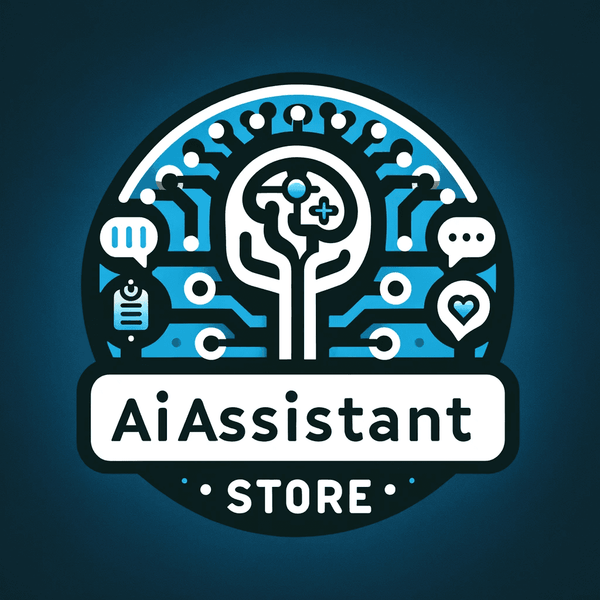Okay, real talk for a minute.
There’s this phrase - “holistic approach to AI” - floating around the internet like it means something clear. And technically, sure, it does mean something. But the way it gets used? Feels a bit like someone just mashed together a mindfulness quote and a product roadmap and called it strategy.
So let’s dig into it - not like a textbook, but like actual people trying to make sense of something massive, moving, and frankly kind of confusing.
Articles you may like to read after this one:
🔗 What Jobs Will AI Replace? – A Look at the Future of Work
Uncover which careers are most vulnerable to AI disruption and what that means for your professional future.
🔗 Artificial Intelligence Career Paths – The Best Jobs in AI & How to Get Started
Explore the most in-demand AI roles and learn how to launch a career in this rapidly evolving field.
🔗 Pre-Lawyer AI – The Best Free AI Lawyer App for Instant Legal Help
Need legal advice? Discover how Pre-Lawyer AI provides fast, free support for everyday legal questions.
The Word Holistic - Yeah, That One - Carries Weird Baggage 🧳
So back in the day, “holistic” was the kind of word you’d hear in a crystal shop or maybe during a yoga class when someone’s trying to explain why their dog is now vegan. But now? It’s in AI whitepapers. Like, seriously.
But strip away the marketing polish and here’s what it’s trying to get at:
-
Everything’s connected.
-
You can’t isolate one piece of a system and assume it tells the whole story.
-
Tech doesn’t happen in a vacuum. Even when it feels like it does.
So when someone says they’re taking a holistic approach to AI, it should mean they’re thinking beyond KPIs and server latency. It should mean they’re considering ripple effects - visible and invisible.
But often... it doesn’t.
Why It’s Not Just a “Nice to Have” (Even Though It Sounds That Way) ⚠️
Let’s say you build the sleekest, smartest, most efficient model on the planet. It does what it’s supposed to do, checks every metric, runs like a dream.
And then... six months later it’s banned in three countries, it’s been linked to discriminatory hiring, and it’s quietly contributing to a 20% spike in energy demand.
Nobody meant to cause that. But that’s the thing - holistic means accounting for the stuff you didn’t mean.
It’s not about adding bells and whistles. It’s about asking the awkward, often uncomfortable questions - early, repeatedly, even when the answer is inconvenient or just plain annoying.
Okay, Let’s Try a Side-by-Side Breakdown 📊 (Because Tables Make Things Feel Real)
| 🤓 Focus Area | Traditional AI Mindset | Holistic AI Mindset |
|---|---|---|
| Model Evaluation | “Does it work?” | “Who does it work for - and at what cost?” |
| Team Composition | Mostly engineers, maybe a UX person | Sociologists, ethicists, devs, activists - actual mix |
| Ethics Handling | Appendix at best | Woven in from minute one |
| Data Concerns | Scale first, nuance later | Curation first, context always |
| Deployment Strategy | Build fast, fix later | Build slow-ish, fix while you build |
| Post-launch Reality | Bug reports | Human feedback, lived experience, policy audits |
Not all holistic approaches look the same - but they all zoom out instead of tunnel deeper.
Cooking Metaphor? Why Not. 🧂🍲
You ever try cooking something new and halfway through you realize the recipe assumes you have an entirely different kitchen setup? Like, "Use a sous-vide machine you definitely don’t own..." or "Let it rest for 12 hours at 47% humidity"? Yeah.
That’s AI without context.
Holistic means checking the kitchen before you start cooking. It means knowing who’s eating, what they can or can’t eat, and whether the table is even accessible to everyone. Otherwise? You end up with a very fancy dish that makes half the room sick.
What This Actually Looks Like on the Ground (Messy, Usually) 🛠️
Let’s not romanticize it - holistic work is messy. It’s often slower. You’ll argue more. You’ll hit philosophical potholes no one warned you about. But it’s real. It’s better. It holds up.
Here’s how it manifests:
-
Unexpected Collaborations: A poet working with an AI architect. A linguist calling out problematic prompts. It’s weird. It’s brilliant.
-
Hyper-localized Adjustments: One model might need five versions to work respectfully across different cultural contexts. Translation isn’t always enough.
-
Feedback That Hurts a Little: Holistic systems invite criticism. Not just from users - but from critics, historians, frontline workers. Sometimes it stings. It should.
-
Energy Questions You’d Rather Avoid: Yeah, that shiny new model is awesome. But it burns through more energy than a small town. Now what?
So Wait - Is This Slower? Or Just Smarter? 🐢⚡
Yeah... it’s slower. Sometimes. At first.
But slow isn’t stupid. If anything, it’s protective. Holistic AI might take longer to build - but you’re less likely to wake up one day with a PR crisis, a lawsuit, or a deeply broken system masquerading as “innovation.”
Slower means you noticed things before they exploded.
That’s not inefficiency - that’s design maturity.
So, What Does It Really Mean to Take a Holistic Approach to AI? 🧭
It means a lot of things, depending on who you ask. And it should.
But if I had to reduce it to something non-glib, it’d be this:
You don’t just build the tech. You build around it - with the people, the questions, and the friction that makes it human again.
And maybe, at the end of the day, that’s what this whole field needs: not better answers, but better questions.

